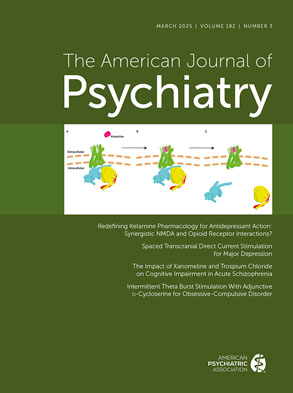Abstract
The main object of this communication is to present a study of 90 pairs of twins with manic-depressive syndromes.
Among 23 pairs of monozygotic twins included in this material both twins were found to be affected in 16 instances, and only one of each pair in 7 instances.
Among the remaining 67 pairs of twins, which are dizygotic, both twins were affected in 11 instances, and only one in 56 instances.
Hereditary or germinal factors play an important part in the etiology of manic-depressive syndromes, as is shown by the contrast between monozygotic and dizygotic twins in the percentage of cases of both twins of the pair affected—69.6 per cent for the monozygotic and 16.4 per cent for the dizygotic twins in our material.
Hereditary or germinal factors, in themselves, are often inadequate, i. e., they do not suffice to produce a manic-depressive syndrome, as is shown by the high proportion of cases among monozygotic twins in which only one of the pair is affected—30.4 per cent in our material. In other words, in some cases at least, factors other than heredity are required to produce the pathogenic effect.
Hereditary or germinal factors are not always present—therefore, not essential—in the etiology of manic-depressive syndromes. This is shown by the relatively high proportion, among dizygotic twin-brothers and twin-sisters of affected subjects, as compared with their siblings, of similarly affected individuals—16.4 per cent for the twins and somewhere between 1.5 and 3.4 per cent for the siblings.
Sex is a factor of great importance in the etiology of manic-depressive syndromes. This has long been known, but as far as our material is concerned, it is indicated in most striking fashion by the findings in our group of opposite-sex twins. Among our 32 pairs of this type of twins, both twins were affected in three, the male alone in five, and the female alone in 24 instances.
In § 2 are cited case histories of monozygotic twins demonstrating complete concordance of findings (both twins affected, similarly), partial concordance (both twins affected, but in a manner quantitatively dissimilar), and discordance of findings (only one twin affected, the other normal).
No case of qualitative dissimilarity has occurred in our group of monozygotic twins with manic-depressive syndromes, i. e., no case of one twin having such a syndrome and the other exhibiting some neuropsychiatric condition belonging to another clinical group.
In § 3 are cited case histories of dizygotic twins, same-sex and opposite-sex, demonstrating complete concordance of findings, partial concordance (quantitative dissimilarity), and complete discordance.
A case is also cited demonstrating qualitative dissimilarity in a pair of opposite-sex twins—the female twin having a manic-depressive syndrome and the male having mental deficiency in the degree of imbecility.
§ 4 is devoted to a discussion of the etiology of manic-depressive syndromes in the light not only of the data yielded by the twin material, but also of previously known facts.
It would seem that, while manic-depressive syndromes can occur as manifestations of organic cerebral affections, or of various somatic diseases, or as sequels of intranatal or postnatal head trauma, the bulk of the cases occur on an hereditary basis either under ordinary conditions of life or under the influence of external factors which are, for the most part, of psychogenic nature.
The fact that the twin material bears out so largely the traditional view, that manic-depressive psychoses are "the most hereditary" group among the commoner types of mental disease, encourages us to make another attempt of formulating a hypothesis which would reflect the known facts without undue forcing.
Accordingly, a hypothesis is offered of the mode of inheritance of manic-depressive psychoses, in which the existence of a cyclo-thymic factor (C) in the autosomes is assumed, and an activating factor (A) in the X-chromosomes.
According to this hypothesis, human subjects may be classified, with reference to the cyclothymic components of temperament, into six types of men and nine types of women. Among these types two in men and four in women represent temperamental constitutions which make possible the development of manic-depressive psychoses.
Among the six genetic types of men and nine genetic types of women there are, obviously, 54 possible types of mating. A series of formulas is submitted representing these matings, together with the theoretically to be expected genotypic compositions of the resulting offspring.
The hypothesis on which these formulas are based is not out of harmony with known facts concerning familial distributions of manic-depressive psychoses; and it seems capable of explaining quantitative differences within the group, the excess of incidence in women, and the seeming operation now of a dominant, now of recessive, now of a sex-linked mode of inheritance.
According to the hypothesis, hereditary factors play a variable part in different cases. This part would seem to be now strong and in itself adequate, for the production of the pathogenic effect; now weak and in itself inadequate, the tendency remaining latent indefinitely or until rendered manifest by the added influence of external, mostly psychogenic, factors.
An obvious corollary is to the effect that we must be prepared, in checking any hypothesis, to find phenotypes numerically falling below genotypes, as they certainly do among monozygotic twins.
It would take pages of space to make detailed acknowledgment of assistance received by us, from officials in institutions in many parts of this country and Canada and from other colleagues, in the work of collecting material for this study. We have but the opportunity of expressing to all our thanks and appreciation.
The work was financed in part by a grant-in-aid awarded by the Social Science Research Council, and for this, too, we wish to express our gratitude.

